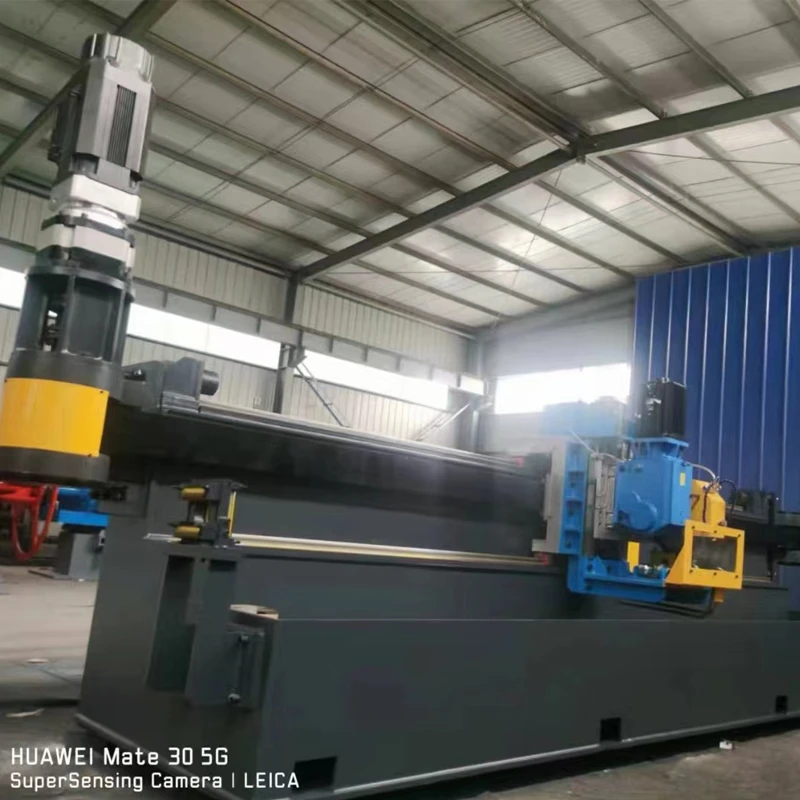Wire Straightening and Cutting Machinery for Precision Metal Fabrication
Understanding Steel Wire Straightening and Cutting Machines
In the realm of manufacturing and construction, precision and efficiency play vital roles in ensuring high-quality outputs. Among the numerous tools and machines that facilitate these objectives, the steel wire straightening and cutting machine stands out as a vital component for industries relying on steel wire applications. This machine serves as a bridge between raw materials and finished products, ensuring that steel wires meet the precise specifications required for various applications.
Functionality of Steel Wire Straightening and Cutting Machines
At its core, a steel wire straightening and cutting machine is designed to straighten coiled or bent steel wire and then cut it to predetermined lengths. The process typically involves two key stages straightening and cutting. The straightening component utilizes rollers and guides to eliminate bends and curves in the wire, resulting in a perfectly straight product. This is critical, as any irregularities can affect the integrity and performance of the final product—whether it be for construction reinforcement, automotive manufacturing, or crafting wire mesh.
Once the wire is straightened, the machine transitions to the cutting phase. This is where precision cutting comes into play. The machine typically employs saws or shears that can be finely adjusted to produce the exact lengths required. The efficiency of this process not only saves time but also minimizes waste, making it both cost-effective and resource-efficient.
Applications of Steel Wire Straightening and Cutting Machines
The applications of straightened and cut steel wires are diverse, catering to various sectors, including construction, automotive, and manufacturing. In construction, straightened wire is essential for reinforcing concrete, which enhances the structural integrity of buildings and bridges. Similarly, the automotive industry utilizes these wires for various components, ensuring durability and strength where it is most needed.
steel wire straightening cutting machine

Additionally, the manufacturing of wire mesh, cages, and other products relies heavily on quality straightening and cutting. In fencing, for instance, properly straightened wire ensures a consistent and sturdy barrier, while in crafting, artists and designers depend on the precision that these machines provide to create intricate designs without structural flaws.
Advantages of Modern Machines
Modern steel wire straightening and cutting machines come with advanced technologies that significantly enhance their efficiency and reliability. Many are equipped with digital controls that allow operators to program specific lengths and quantities, thus minimizing human error and optimizing production rates. Automation features enable quick setup and changeover, which is especially beneficial for companies handling varying wire types and sizes.
Moreover, safety features in contemporary machines ensure that operators can work without the undue risk of injury. Emergency stop functions, protective guards, and user-friendly interfaces all contribute to creating a safer work environment.
Conclusion
In conclusion, steel wire straightening and cutting machines are indispensable in various industries that require high-quality steel wire products. By streamlining the production process and ensuring precision, these machines contribute significantly to efficiency and productivity. As technology continues to evolve, we can anticipate further advancements in the capabilities of these machines, leading to even greater precision, reduced downtime, and enhanced safety. As industries continue to demand high-quality materials, the role of straightening and cutting machines will only grow in importance, underscoring their value in the manufacturing landscape.
-
High Frequency Straight Seam Welded Pipe Production Line|BzZhou Xinghua|Precision Welding&EfficiencyNewsJul.30,2025
-
High Frequency Straight Seam Welded Pipe Production Line - BzZhou Xinghua|Precision Engineering&EfficiencyNewsJul.30,2025
-
High-Frequency Straight Seam Welded Pipe Production Line-BzZhou Xinghua Machinery Equipment Manufacturing Co., LTD.NewsJul.30,2025
-
High-Frequency Straight Seam Welded Pipe Production Line-BzZhou Xinghua Machinery Equipment Manufacturing Co., LTD.|Precision Manufacturing, High EfficiencyNewsJul.30,2025
-
High Frequency Straight Seam Welded Pipe Production Line-BzZhou Xinghua Machinery Equipment Manufacturing Co., LTD.|Precision Steel Pipe Manufacturing&Industrial EfficiencyNewsJul.29,2025
-
High-Frequency Straight Seam Welded Pipe Production Line-BzZhou Xinghua Machinery Equipment Manufacturing Co., LTD.|Precision Steel Pipe Manufacturing&Industrial EfficiencyNewsJul.29,2025


